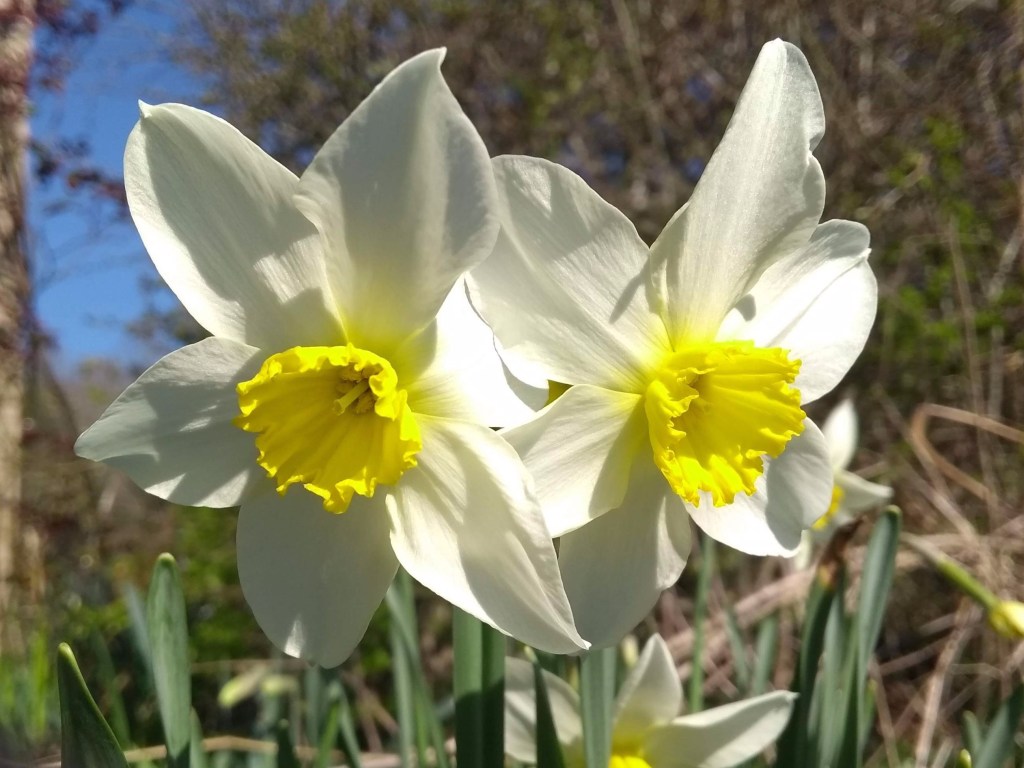
Having spent a week visiting family on a busy street in a town in the south of England, I couldn’t wait to return to the tranquility of the garden. Gardening is good for the mind and the soul, a perfect escape from the stress of everyday life. However, there is something especially soothing about the subdued tones of the Spring garden, the soft yellows of Primrose and delicate whites of the Narcissus. Once I was home I felt like i could instantly breathe again and quickly took a walk around to see what had changed. Whilst daffodils were past their best in Hampshire, at home in North Wales they were just reaching their peak. I took time to sit and enjoy the spectacle serenaded by the Spring bird song.
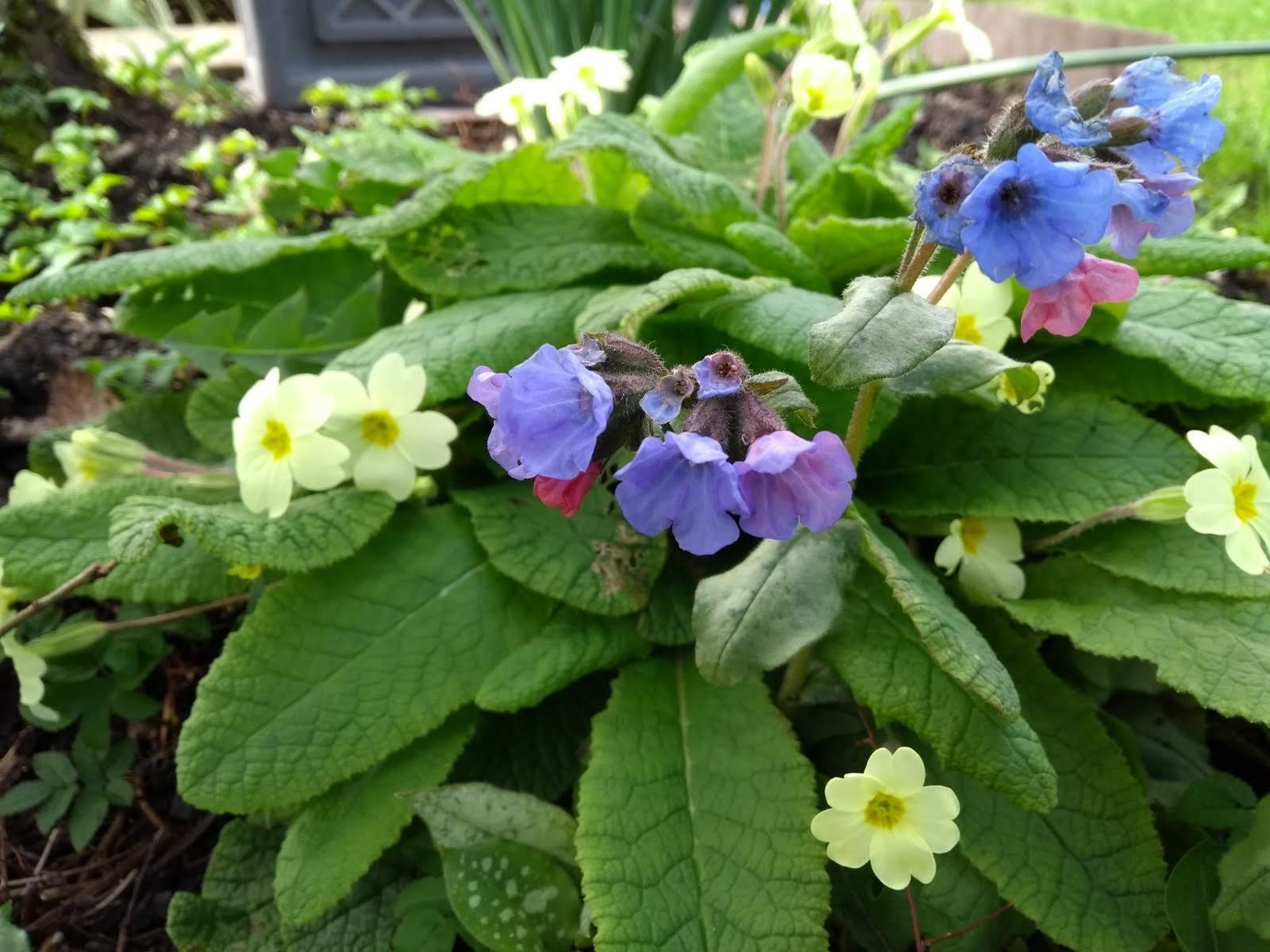
A Spring favourite is not a plant I have introduced but the native primrose which self seeds about the garden. The delicate yellow flowers brighten up the most unlikely of places in between slabs and under trees. Like many spring flowering plants, such as wood anemones, they can take advantage of the small window of light before the canopy closes over in Summer. The low mound forming plants have set off the ever changing blues of the Pulmonaria perfectly.
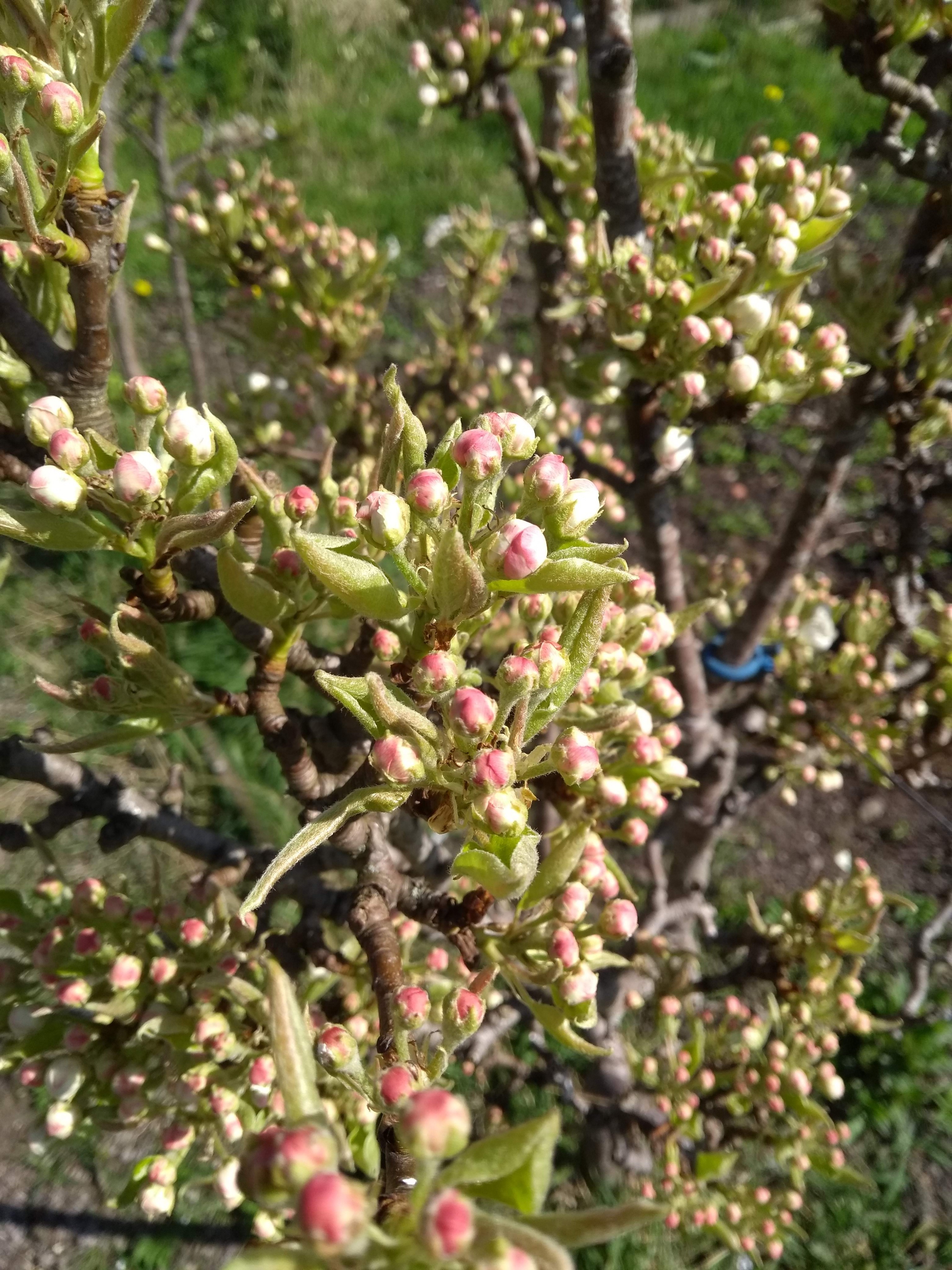
One of my favourite sights is the new hawthorn leaves bursting with a surprising fresh lime green colour. This process of renewal, often taken for granted, never ceases to amaze me. Everything is perfect, untouched by the ravages of months of weather, disease or animal damage. This brightness slowly fades throughout the year only to once again surprise me again the next Spring.
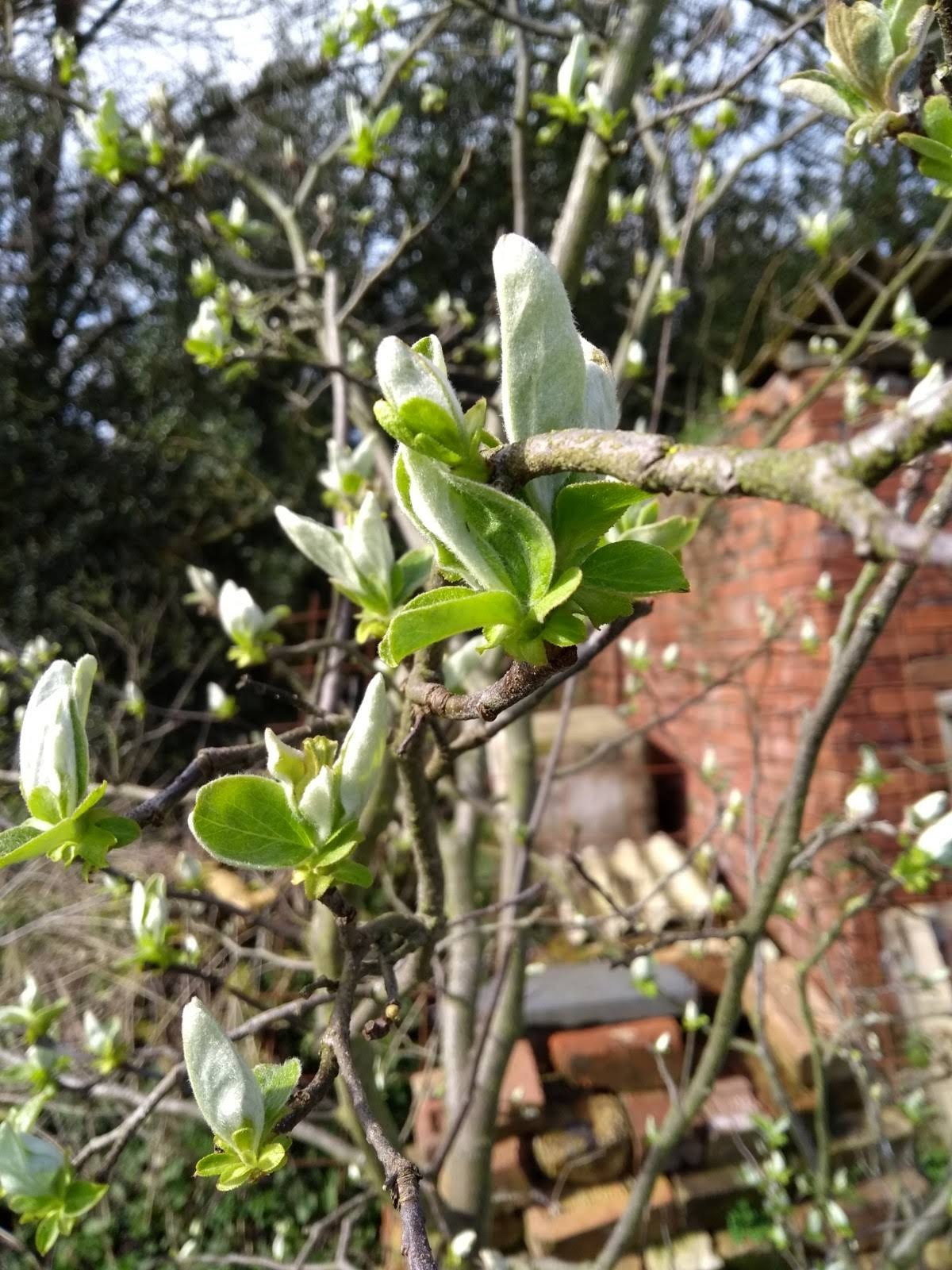
The fruit trees are also beginning to show their new leaves as well as their swelling fruit buds. Each variety has subtly different shades of pink and white buds. Everyone should grow at least one fruit tree, they not only provide delicious fruit, which provides interest from spring until harvest, but blossom in Spring as well as support for lots of wildlife.
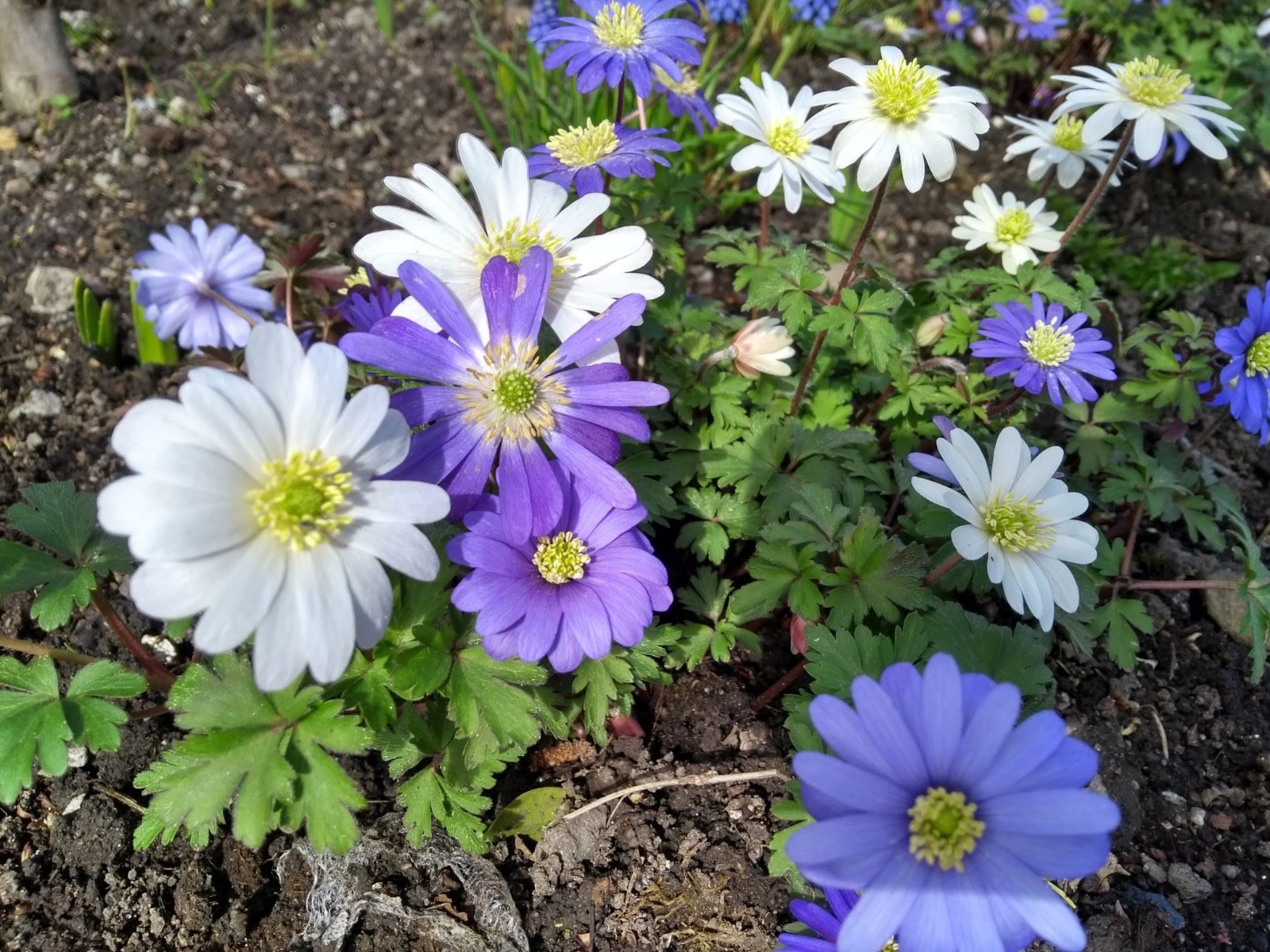
Although I prefer the delicate native Wood Anemone, the bolder Anemone Blanda are perfect for siting under shrubs providing a swathe of early colour. They are fairly easy to grow providing the soil does not get too damp.
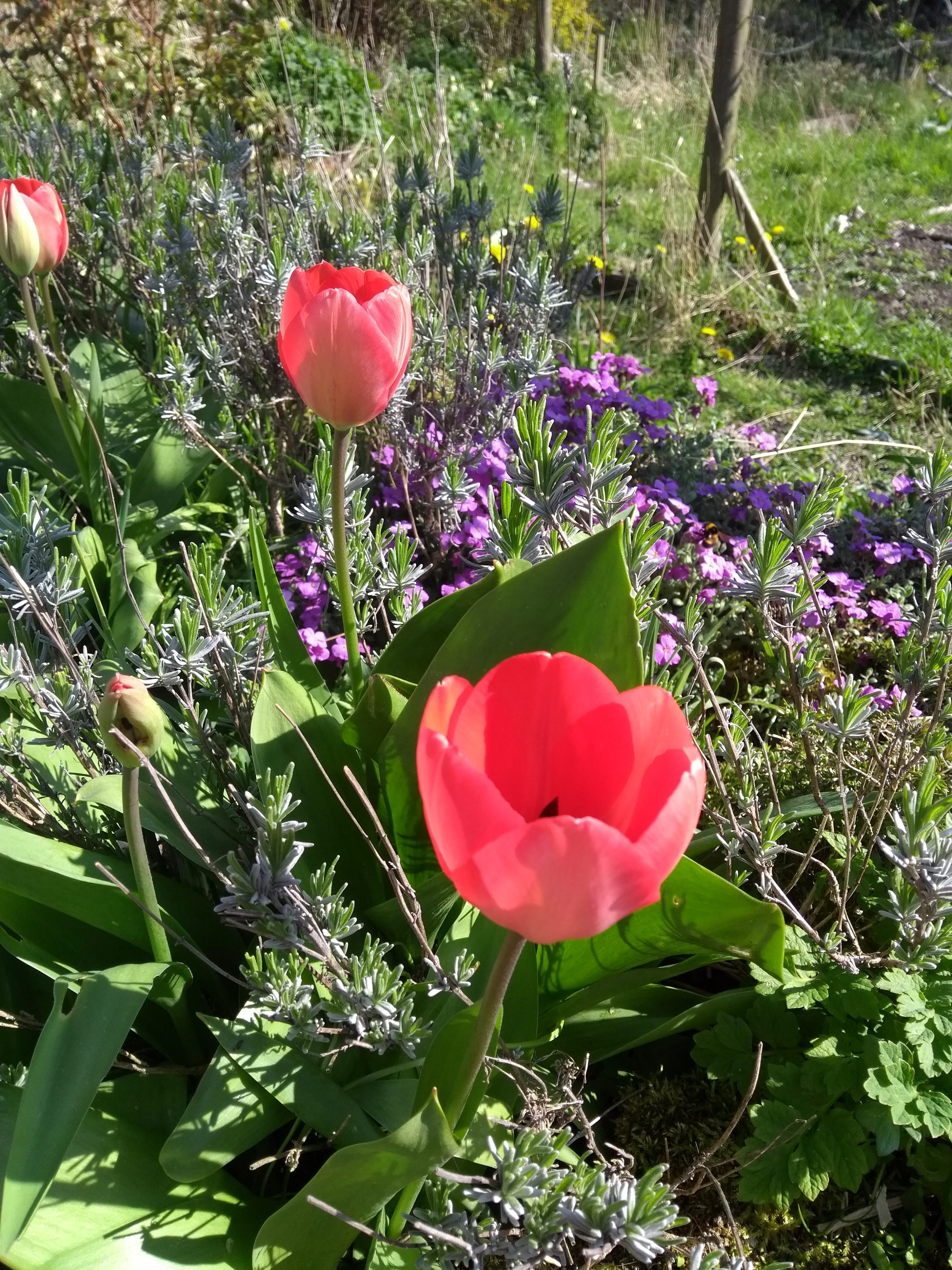
As we are about to move into April the next star of the garden is just emerging here. The first tulips have opened in the recent spell of warm sunny weather. Behind them can be seen the pinkish purple of the aubretia which have been adorning the dry stone walls and steps throughout March. Aubretia is one of those flowers that i used to hate, a relic of the now unfashionable rock garden. However, when I built the walls I placed small plants in pockets of soil in the crevices. Their tumbling mounds have produced a carpet of small bright flowers that can’t help but make you smile during the darkest of days.
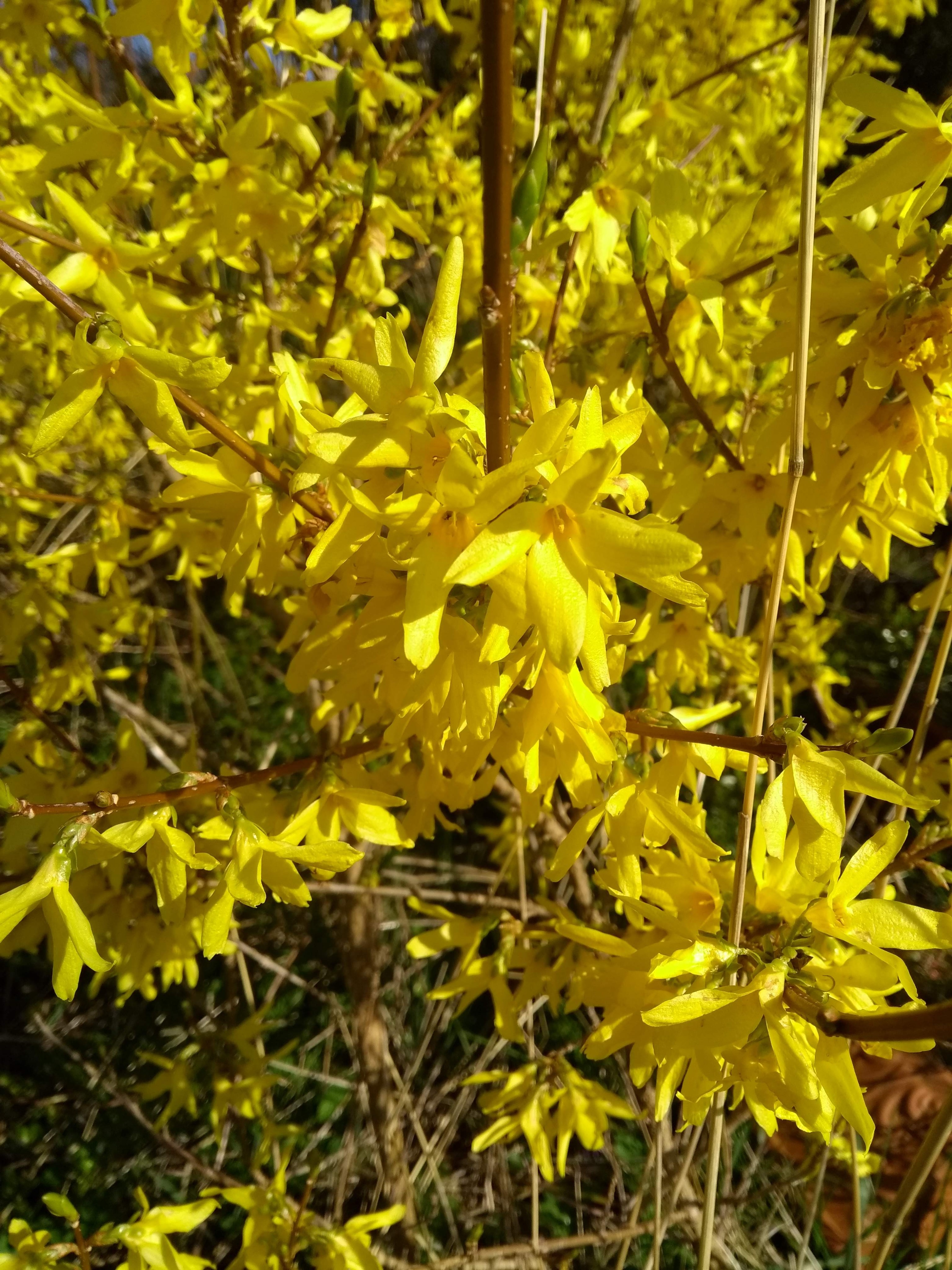
Another often overlooked plant is Forsythia, perhaps because it was once so ubiquitous in British gardens with many being left to their own devices and becoming leggy. However, the branches of this tough shrub are clothed in flowers and it can be trimmed as a semi formal hedge. To benefit from the best display, Forsythia must be pruned immediately after flowering, otherwise it is a very undemanding shrub providing a much needed shot of colour in Spring.
What a great batch of photos! Thank you for sharing!
LikeLike
Others have also mentioned that forsythias are ubiquitous. How disappointing. They are rare here. There were only two in all of our landscapes. I just divided five more this last winter, just because I really like them. We also want to grow more copies of the few flowering quince, which is another locally rare plant that is common elsewhere.
LikeLike
When those yellow flowers open, I bet you can’t resist the urge to say “Nice to see you, to see you nice” 😉
LikeLike
Jokes aside, those are some lovely photos JB and a very nicely written piece
LikeLike